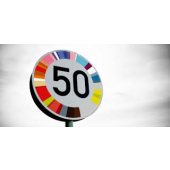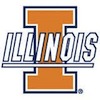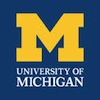Top 50 Public Pharmacy Schools in the US

In preparing our inaugural list of the top public pharmacy schools in the US, we considered dozens of schools in the US that offered pharmacy programs. Our goal with this list is to give students access to information so they can make informed decisions about the schools they choose to attend and the programs they pursue. Our motivation for publishing these rankings is simple. We frequently receive emails from young people -many of whom are already working as pharmacy technicians- asking for advice as to which pharmacy schools they should consider. Our hope is that this list is a starting point for aspiring pharmacists to discover the schools that are the best fit for them.
The criteria we used in making this list consists, in no particular order, of the following: academic reputation, admission selectivity, depth and breadth of the program and faculty, size and scope of the pharm school class, and value as it relates to tuition. All data used on our rankings was obtained from publicly available sources.
Like any list, ours is not perfect and is open for debate. There is no single opinion that trumps all when it comes to which school is the “best”. Ultimately every student has different needs regarding the type and academic rigor of a program, campus culture, as well as cost, lifestyle, and career focus. Hence the notion that we consider these lists a starting point for aspiring pharmacists in the search for the appropriate program that meets their needs.
 1. Purdue University College of Pharmacy, West Lafayette, Indiana
1. Purdue University College of Pharmacy, West Lafayette, Indiana
Established in 1869, Purdue University began instruction in 1874 on a 100-acre campus that was home to just 39 students and six instructors. Today, with more than 37,500 students and a campus that spans 2,552 acres, Purdue University ranks in the Top 25 Public Universities in the U.S. by U.S. News & World Report. The school also ranks 65th among all universities in the U.S. and it house 12 colleges and schools that offer more than 270 academic programs.
Purdue University College of Pharmacy was established in 1884. It is one of the largest Pharmacy Graduate Programs in the nation. A Top Ten Pharmacy school in 2002, 2004, and 2008 (survey), the College of Pharmacy also offers more pharmacy programs than many schools across the U.S. Offerings include the Pharm.D., a Pharm.D./Ph.D., M.S. degrees in Pharmacy Administration, Clinical Pharmacy, and Regulatory and Quality Compliance, and a B.S. in Pharmaceutical Sciences.
The College also offers a Pre-pharmacy program, a Nuclear Pharmacy Certificate program, a Certificate in Regulatory and Quality Compliance, and a Minor in International Pharmacy.
Estimated tuition and fees per semester are $4,996 for Indiana residents and $14,397 for non-residents (2013-2014). Tuition for Pharm.D. students is $11,048 per semester for residents and $20,178 per semester for non-residents.
 2. University of California-San Francisco School of Pharmacy, San Francisco, California
2. University of California-San Francisco School of Pharmacy, San Francisco, California
The University of California-San Francisco (UCSF) is home to some of the nation’s top health sciences schools. The University’s professional schools, Graduate programs, Medical Center, and Children's Hospital “consistently” rank among the best in America by U.S. News & World Report. Founded in 1864, the San Francisco campus is the only campus in the 10-campus University of California system “dedicated exclusively to the health sciences.”
The University, which is the second largest employer in San Francisco, sits on a 255-acre campus and it is home to 1,030 postdoctoral scholars, 1,620 residents consisting of physicians, dentists, and pharmacists in training, and 2,940 students.
The University of California-San Francisco School of Pharmacy was established in 1872 as the California College of Pharmacy. Home to 844 students, the School of Pharmacy was the first pharmacy school in the West. Offerings include the Pharm.D. and Ph.D. degrees in Bioengineering (BioE), Bioinformatics (BI), Biophysics (BP), Chemistry and Chemical Biology (CCB), and Pharmaceutical Sciences & Pharmacogenomics (PSPG).
The School also offers a M.S. in Transitional Medicine and several degree pathways for Pharm.D. students. These include Pharmaceutical Care, Health Services & Policy Research, and Pharmaceutical Sciences.
Tuition for the School of Pharmacy is $35,382 for Pharmacy 1, 2, and 3 programs (9 months each), and $35,307 for the Pharmacy 4 program (9 months). Non-residents pay an additional $12,245 per program.
 3. University of Illinois at Chicago College of Pharmacy, Chicago, Illinois
3. University of Illinois at Chicago College of Pharmacy, Chicago, Illinois
The University of Illinois at Chicago (UIC) was established in 1982 “by the consolidation of two UIC campuses: the Medical Center campus, which dates back to the 19th century, and the comprehensive Chicago Circle campus.” Since then, the school has become the largest university in the Chicago area and the nation's largest medical school.
Home to more than 27,500 students and nearly 10,000 faculty and staff, UIC College of Medicine educates an impressive one in six Illinois physicians. The University, which sits on a 240-acre urban campus, houses 15 academic colleges offering more than 240 degree programs.
Established in 1859, the University of Illinois at Chicago College of Pharmacy is the oldest academic unit of the University of Illinois and one of the oldest pharmacy school's in the nation. Ranked among the Top Ten Colleges of Pharmacy in the nation by U.S. News & World Report, the College of Pharmacy is home to 883 students, 40 residents and fellows, and 189 full and part-time faculty.
Offerings include the Pharm.D., which may be completed at UIC’s Chicago campus or at its 20-acre Rockford, Illinois campus, and Graduate programs in Biopharmaceutical Sciences, Forensic Science, Forensic Toxicology, Medicinal Chemistry, and Pharmacognosy. The College also offers a number of joint degree programs including the Pharm.D./Ph.D., Pharm.D./MBA, Pharm.D./M.S.-CTS, and the Pharm.D./MSHI.
Graduate base tuition and fees for Fall 2013 and Spring 2014 are $5,533 per semester for full-time residents and $11,532 per semester for full-time non-residents.
 4. The Ohio State University College of Pharmacy, Columbus, Ohio
4. The Ohio State University College of Pharmacy, Columbus, Ohio
The Ohio State University (OSU) has been around since 1870. With more than 55,000 students, the school is one of the largest universities in the nation. Ranked among the nation’s Top 20 Public Universities by U.S. News & World Report, OSU sits on a 1,700-acre campus and it offers 175 undergraduate majors, and 240 Master’s, Doctoral, and Professional Degree programs.
The Ohio State University College of Pharmacy was established in 1885. It is one of the six original colleges of The Ohio State University. Degree offerings include the Pharm.D., Ph.D. degrees in Pharmaceutics, Pharmacology, Medicinal Chemistry & Pharmacognosy, and Translational Science; and a M.S. in Community Care and Health-Systems Pharmacy Administration.
The College also offers several combined programs including the Pharm.D./MBA and the Pharm.D./MPH, as well as a B.S. in Pharmaceutical Sciences (BSPS).
College of Pharmacy tuition for years 1-3 is $20,472.80 per year in-state and $22,717.20 for year 4. Out-of-state tuition for years 1-3 is $39,072.80 per year and $43,153.20 for year 4. Tuition costs include all fees.
 5. University of Minnesota College of Pharmacy, Minneapolis, Minnesota
5. University of Minnesota College of Pharmacy, Minneapolis, Minnesota
Established in 1851, the University of Minnesota (U of M) sits on roughly 1,150 acres in Minneapolis and St. Paul and it is home to more than 69,000 students. The University, which also houses 19 colleges and schools, offers more than 800 programs, minors, and certificates at the undergraduate, Graduate, Master’s and Doctoral levels. One of the University’s top colleges is the College of Pharmacy.
The College of Pharmacy at the University of Minnesota (U of M) is the only pharmacy school in the state. Founded in 1892, the College ranks among the Top Ten Schools of Pharmacy by U.S. News & World Report and it trained roughly two-thirds of the state's 7,500 active pharmacists. The College, which consists of two connected campuses (Twin Cities and Duluth, Minnesota) is home to more than 280 students.
Program offerings include the Pharm.D., Ph.D. degrees in Experimental Pharmacotherapy, Integrated Biological Sciences, Medicinal Chemistry, Pharmaceutics, and Social and Administrative Pharmacy, and several dual degrees including the Pharm.D./MBA, and the Pharm.D./MPH. The Pharm.D./MBA program is offered through two schools—the Carlson School of Management and the Labovitz School of Business and Economics.
Other program offerings include M.S. programs in Integrated Biological Sciences, Social and Administrative Pharmacy, and Combined Social & Administrative Pharmacy.
Tuition rates for the College of Pharmacy are $991 per credit for years 1-3 (or $11,892 per term for 12+ credits), and $11,892 per term for year 4, regardless of credit load. Nonresidents pay $1,466 per credit for years 1-3 (or $17,592 for 12+ credits) and $17,592 for year 4, regardless of credit load.
 6. University of Michigan College of Pharmacy, Ann Arbor, Michigan
6. University of Michigan College of Pharmacy, Ann Arbor, Michigan
The University of Michigan was first public university in the Northwest Territories. Established in 1871, the University spans three campuses and it is home to more than 59,000 students. Campuses include Ann Arbor (main campus, 31,000 acres), Flint, Michigan (76 acres in the heart of downtown Flint), and the Dearborn campus which sits on the 196-acre Henry Ford Estate—a gift of the Ford Motor Company.
The University of Michigan offers more than 250 areas of study across 19 colleges and schools. This includes one of America’s best pharmacy schools—the University of Michigan College of Pharmacy. Established in 1876, the College of Pharmacy was the first school of pharmacy in a U.S. state university. The College is home to approximately 370 students. Three-hundred are enrolled in the Pharm.D. program.
In addition to the Pharm.D. program, the College of Pharmacy offers a Ph.D. in Medicinal Chemistry with Biochemical, Biophysics, Bioinformatics, and Organic tracks; Ph.D. degrees in Pharmaceutical Sciences and Social and Administrative Sciences; a Master of Engineering - Pharmaceutical Engineering, and a Joint Pharm.D./Ph.D. in Pharmaceutical Sciences.
Tuition for the 2010-2011 academic year is $20,212 for Michigan residents and $36,134 for nonresidents.
 7. University of Texas at Austin, College of Pharmacy, Austin, Texas
7. University of Texas at Austin, College of Pharmacy, Austin, Texas
The University of Texas at Austin (UT Austin) ranks among the Top 25 Schools by Times Higher Education World University Rankings (2012-2013). Established in 1883,UT Austin is home to more than 50,000 students, making it the largest school in the University of Texas system and one of the largest public universities in the U.S.
The school offers more than 170 undergraduate programs, 150 Master’s programs, and 80+ Doctoral programs across 18 colleges and schools. This includes the College of Pharmacy. Established in 1893, the College of Pharmacy at UT Austin was home to just three students and 11 professors when it opened. At the time, the College operated out of the ground level of the Old Red Main Building at the University of Texas Medical Branch at Galveston.
Today, the College of Pharmacy is home to 127 students and it consists of a two-building pharmacy complex at the University of Texas at Austin. The College also ranks among the Top Ten Pharmacy Schools in the U.S. by U.S. News & World Report.
UT Austin College of Pharmacy offers a Pharm.D., and M.S. and Ph.D. programs in Pharmaceutical Sciences with specializations in Pharmacology and Toxicology, Medicinal Chemistry, Pharmaceutics, Pharmacotherapy, Health Outcomes and Pharmacy Practice, and Interdisciplinary Studies. The College also offers a new interdisciplinary Ph.D. Degree in Translational Sciences.
Tuition rates for Pharm.D. students are $7,915 per semester for residents and $20,460 per semester for non-residents and international students. Tuition rates are based on a flat rate tuition plan.
 8. University of Maryland School of Pharmacy, Baltimore, Maryland
8. University of Maryland School of Pharmacy, Baltimore, Maryland
The University of Maryland began as Maryland Agricultural College in 1856. Ranked among the Top 20 Public Universities in the country by U.S. News & World Report and Forbes, the University of Maryland on a 1,200-acre campus and it is home to 37,248 students. The school offers more than 90 academic programs across more than a dozen colleges and schools. This includes the School of Pharmacy.
The University of Maryland School of Pharmacy is the fourth oldest school of pharmacy in the U.S. Established in 1841, the School is home to nearly 700 students across
two campuses in Baltimore and Rockville, Maryland. Program offerings include the Pharm.D., Ph.D. degrees in Pharmaceutical Health Services Research and Pharmaceutical Sciences, and M.S. degrees in Pharmaceutical Sciences (Pharmacometrics) and Regulatory Science.
The School of Pharmacy also offers several dual degree programs including a Pharm.D./JD (University of Maryland School of Law), Pharm.D./MBA (UB/Towson MBA Program), and a Pharm.D./MPH (University of Maryland School of Medicine).
Resident tuition for the University of Maryland School of Pharmacy are $572 per credit hour ($3,432/six credits), and $1,030 per credit hour ($6,180/six credits) for non-residents.
 9. University of Kentucky College of Pharmacy, Lexington, Kentucky
9. University of Kentucky College of Pharmacy, Lexington, Kentucky
Established in 1865 as the Agricultural and Mechanical College of the Kentucky University, the University of Kentucky ranks among the Top 75 Public Schools by U.S. News & World Report. The school, which sits on a 779-acre campus, is home to 28,094 students enrolled in more than 250 programs across 18 colleges and schools. This includes the top-ranked College of Pharmacy.
The University of Kentucky College of Pharmacy was established in 1870 as the Louisville College of Pharmacy. It ranks among the Top Ten Pharmacy Schools in the U.S. by U.S. News & World Report and the research faculty ranks number four out of 354 institutions in scholarly activity. Offerings include the Pharm.D. degree and a Ph.D. in Pharmaceutical Sciences with three tracks including Traditional Pharmaceutical Science, Clinical and Experimental Therapeutics, and Pharmaceutical Outcomes & Policy.
Tuition for the University of Kentucky College of Pharmacy is $12,836 per semester for Kentucky residents and $23,307 per semester for non-residents.
 10. University of Utah College of Pharmacy, Salt Lake City, Utah
10. University of Utah College of Pharmacy, Salt Lake City, Utah
The University of Utah is the state’s oldest institution of higher education. Founded in 1850, the school is home to more than 32,000 students, making it the largest post-secondary institution in the state. The University of Utah sits on a 1,535-acre campus and it houses more than a dozen colleges and schools, offering nearly 200 undergraduate and Graduate programs.
The University of Utah College of Pharmacy is part of the University of Utah Health Sciences Center. Established in 1946, the College ranks among the Top Ten Colleges of Pharmacy in the U.S. by U.S. News & World Report (2013). The College is also ranks among the Top Ten Colleges for Research Productivity by the National Institutes of Health (NIH).
The College of Pharmacy offers a Pharm.D. and Ph.D. degrees in Medicinal Chemistry, Pharmaceutics & Pharmaceutical Chemistry, and Pharmacology & Toxicology. Students may also pursue the Pharm.D. and Ph.D. simultaneously in the areas of Medicinal Chemistry, Pharmaceutics & Pharmaceutical Chemistry, Pharmacology & Toxicology, and Pharmacotherapy.
Resident tuition for the University of Utah College of Pharmacy is $11,046.19 (per semester/12 credit hours) and $19,325.92 (per semester/12 credit hours) for non-residents.
Pages

- Facebook Like
- Google Plus One
- 272015 reads


